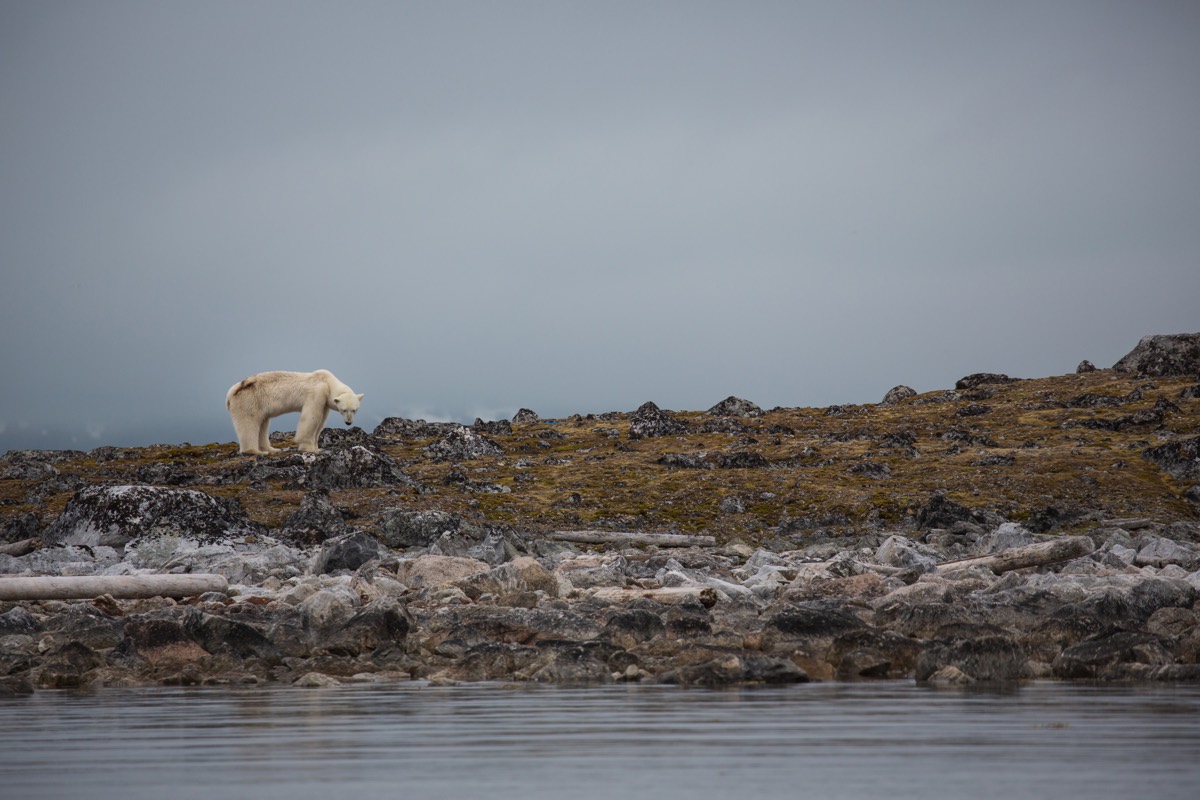Starving Polar Bear's Last Hours Captured in Heartbreaking Video
A hard-to-watch video from Canada's Baffin Islands shows an emaciated polar bear in what were likely the last few hours of its life.
National Geographic photographer Paul Nicklen captured the sad sight on video and posted it online Dec. 5. The video shows the bear staggering toward a trash can and searching in vain for something to eat. It ends with the bear resting on the ground, exhausted. [Gallery: Stunning Photos of Polar Bears in the Arctic]
Nicklen told National Geographic he wants the footage of the dying bear to communicate the consequences of climate change.
"When scientists say bears are going extinct, I want people to realize what it looks like. Bears are going to starve to death," Nicklen said. "This is what a starving bear looks like."
Ice-bound hunters
Polar bears depend on sea ice to hunt seals, which fuel the bears with their blubbery, energy-rich meat. As the climate warms, the Arctic has been particularly hard-hit. Arctic sea ice reaches its maximum extents in late winter, typically around March, and melts in the summer, hitting its minimums around September. In recent years, ice has been forming later, melting sooner and covering less area. Record or near-record lows in ice extent have become standard each March, when the Arctic should be at its most frosted-over.

In March 2016, NASA scientist Walt Meier told Live Science that the Arctic has lost about half its volume at its maximum extents since record-keeping began. November 2017 saw an average sea-ice extent of 3.65 million square miles (9.46 million square kilometers), according to the National Snow and Ice Data Center, the third-lowest November extent on average since 1979.
For polar bears, the loss of sea ice means the loss of hunting grounds. The International Union for Conservation of Nature lists the bears (Ursus maritimus) as "vulnerable," largely because of the loss of sea ice. Already, scientists have found that the loss of ice means polar bears must swim farther for food, a fact that puts cubs, in particular, at risk. Bears must also travel longer distances on foot over sea ice as the drift of the ice increases alongside melt, according to a 2017 study by the U.S. Geological Survey. Another study of bears fitted with tracking collars near Hudson Bay found that bears now spend more time on land, arriving earlier in the summer and leaving later in the fall, a pattern that means their seal-hunting season is limited.
Sign up for the Live Science daily newsletter now
Get the world’s most fascinating discoveries delivered straight to your inbox.
Though polar bears do shift their diet to snow goose eggs, caribou and other terrestrial meals when on land, a 2015 study published in the journal Frontiers in Ecology and the Environment found that the calories from these sources aren't enough to offset what the polar bears burn in foraging.
Representative bear?
Of course, there is no way to know whether any given bear would have starved without climate change, or what the history of the bear in the video is.
Shrinking sea ice is causing polar bears to starve more often, but "[y]ou can't say that any one individual is starving because of climate change," Steven Amstrup, chief scientist at Polar Bears International, told Live Science in 2015 after a heart-wrenching photo of a skeletal polar bear circulated online. That's because polar bears do starve in the wild on a regular basis. As apex predators, they have no natural enemies to put them out of their misery when they become too old or injured to hunt, Amstrup explained.
Nevertheless, Nicklen's video shows what this looks like for bears that have an increasingly hard time hanging on in warming conditions. He filmed the video with tears rolling down his cheeks, he told National Geographic.
He's been asked why he didn't do something to help, he said, but it's illegal to feed wild polar bears in Canada, and there was little he could have done even if it weren't.
"[I]t's not like I walk around with a tranquilizer gun or 400 pounds of seal meat," Nicklen said.
Original article on Live Science.

Stephanie Pappas is a contributing writer for Live Science, covering topics ranging from geoscience to archaeology to the human brain and behavior. She was previously a senior writer for Live Science but is now a freelancer based in Denver, Colorado, and regularly contributes to Scientific American and The Monitor, the monthly magazine of the American Psychological Association. Stephanie received a bachelor's degree in psychology from the University of South Carolina and a graduate certificate in science communication from the University of California, Santa Cruz.










